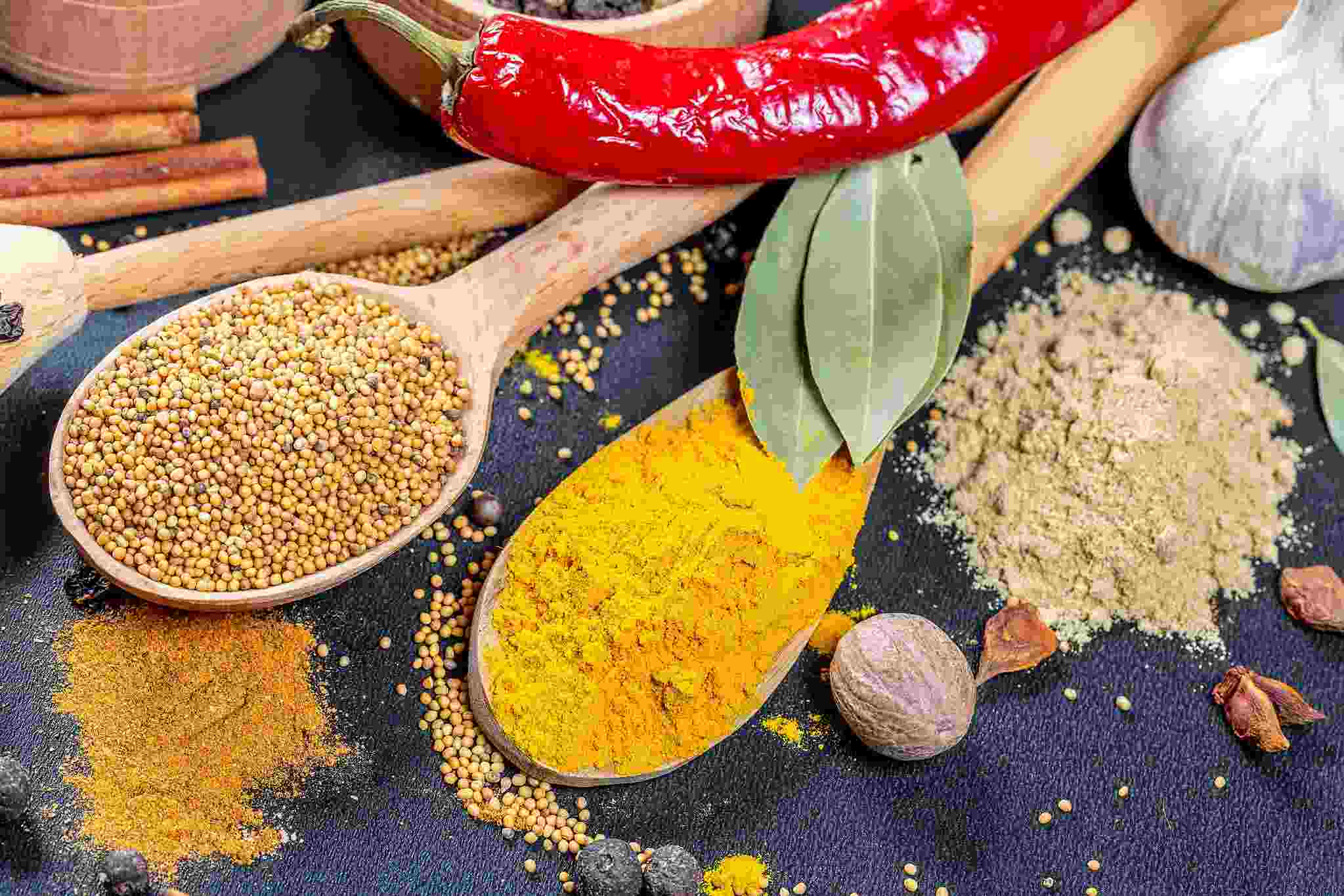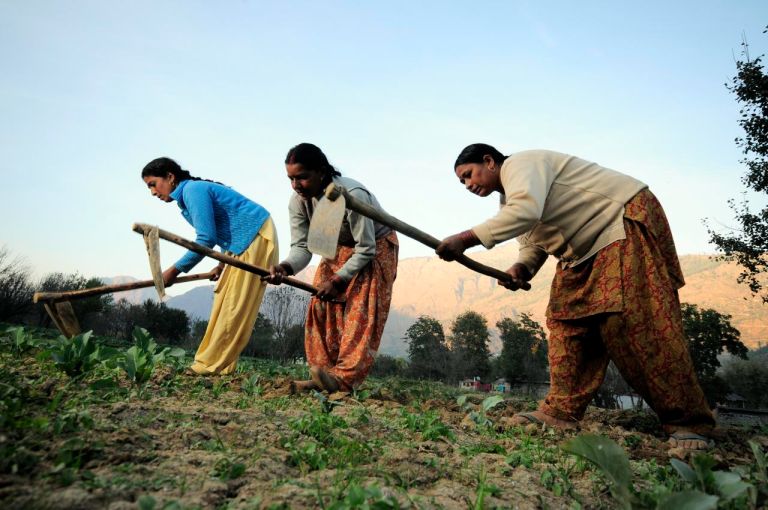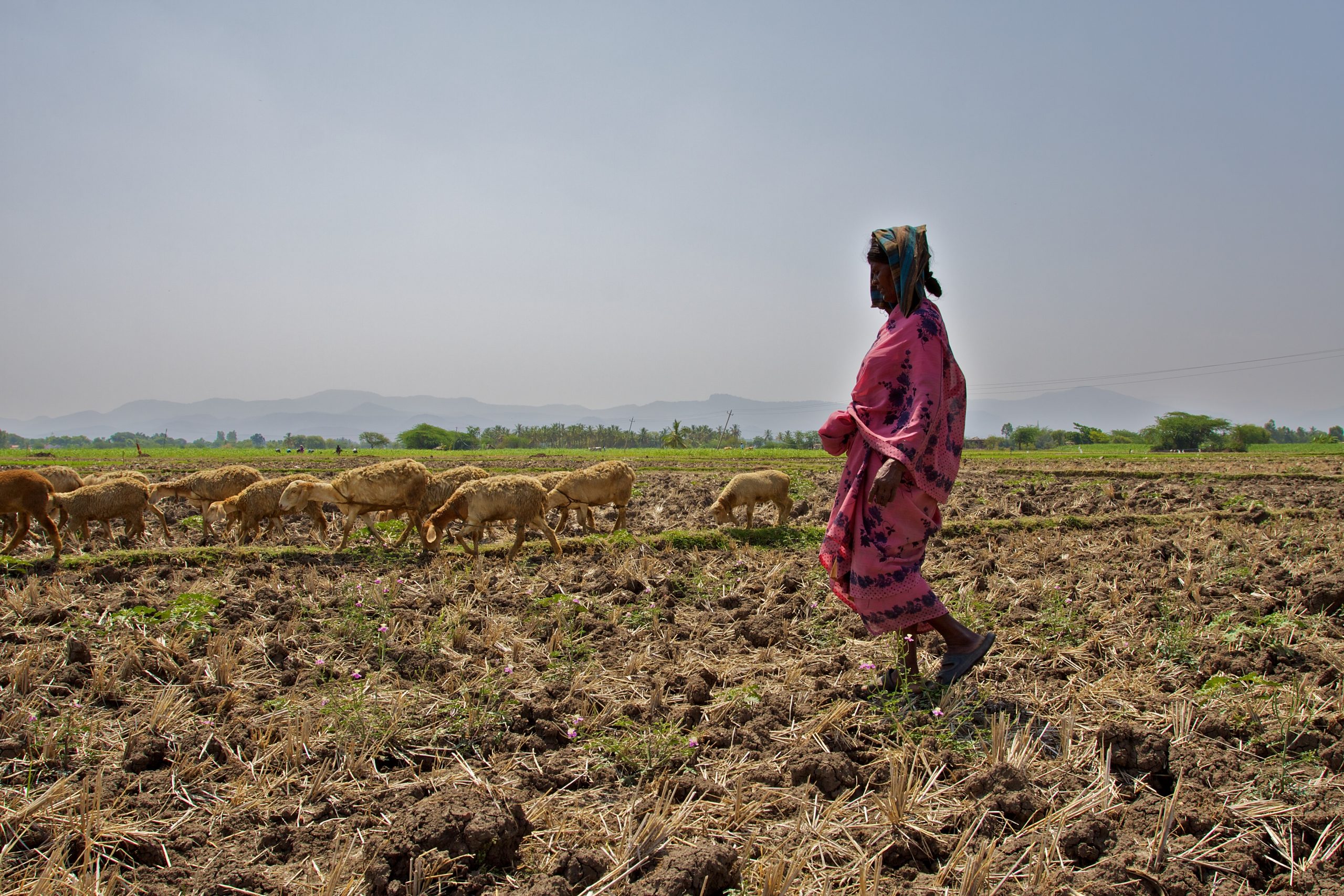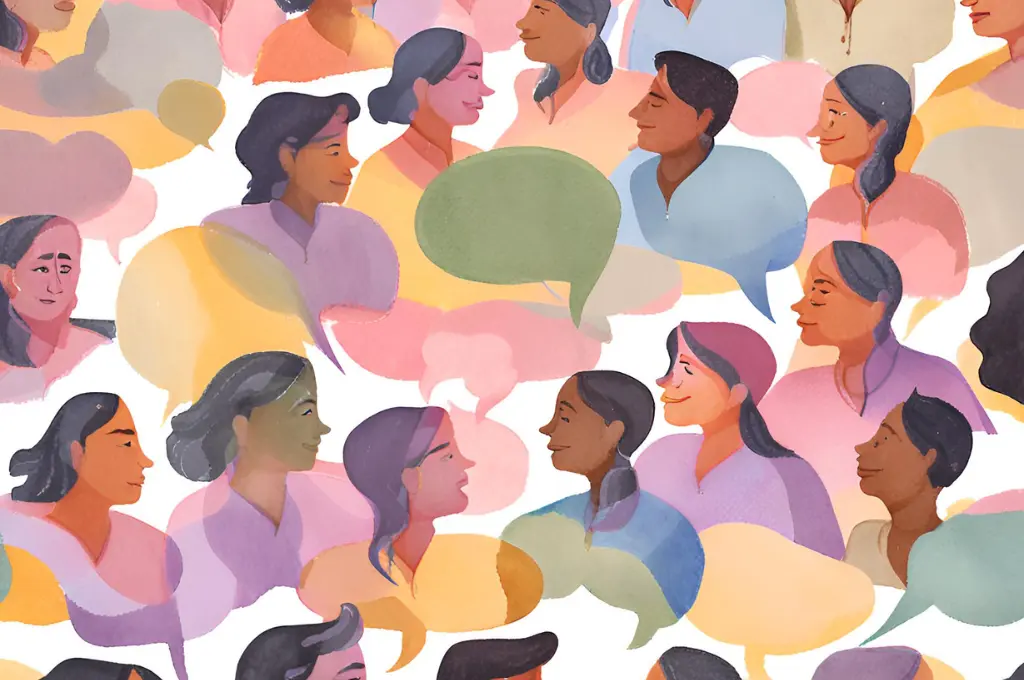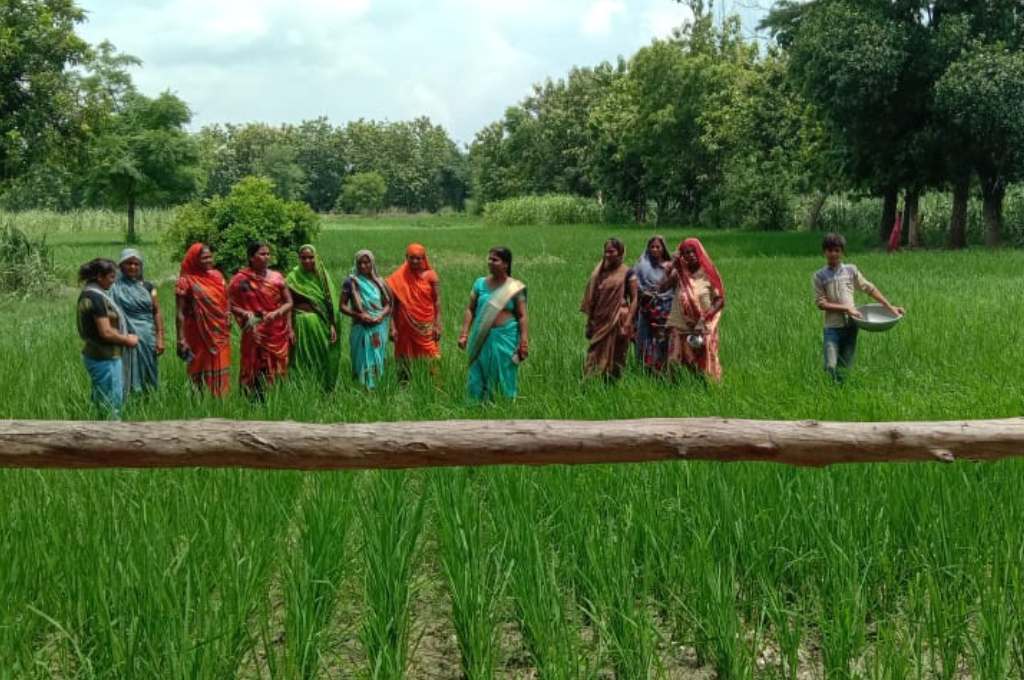Edited transcript of the episode:
00.42
Smarinita: Globally, more than 400 million women are engaged in farm work. This includes everything from sowing, winnowing, and harvesting to other forms of labour-intensive processes such as rice transplantation. Even in India, a majority of farm work in the country is done by women. Approximately 80 percent of all economically active women are employed by the agricultural sector. Despite this, when we talk about agriculture in India, we don’t necessarily talk about women farmers. We don’t talk about the women who work on their family lands, who work as daily wage labourers, or who look after livestock. Our schemes and policies almost always leave out this invisible yet extremely valuable workforce.
But while we fail to acknowledge or value their work, can we really imagine a world in which women stop farming? Can we even exist in a world where women aren’t involved in agricultural production? Answering this question and more today are our two guests, Ireena Vittal and Kavitha Kuruganti.
Ireena is one of India’s most respected independent consultants and advisers on emerging markets, agriculture, and urban development. She currently sits on the board of some of India’s largest companies, including HDFC and Diageo. Previously, she was a partner at McKinsey and Company, where she was a founding member of the global development and emerging markets practice.
Kavitha is a social activist known for her work on sustainable farm livelihoods and farmers’ rights. She is the founder-convener of Alliance for Sustainable and Holistic Agriculture, which is a pan-Indian alliance of more than 400 farmer organisations. Kavitha has also served on several Government of India committees and task forces in advisory roles.
02.25
Smarinita: Hi Kavitha, hi Ireena. Welcome to the ‘On the Contrary’ podcast yet again. It’s nice to have both of you here. Kavitha, if I can start with you, when we talk about farmers in our country, the dominant image tends to be that of a man with a hull in the middle of his fields, but approximately 40 percent of our agricultural workforce is women. So, can you briefly explain to our listeners the role that women play in agriculture today?
Kavitha: I just want to point out that even the number that is stated—of 40 percent of all agricultural workers being women—is questionable. There is probably no woman out there who’s not a worker and no rural woman out there who’s not associated, at least peripherally, with agriculture. So that’s a questionable number. But among women who are counted as workers by our official data systems, at least 73 percent (as per the latest numbers) are engaged in agriculture. And they are engaged in agriculture in what is called as a self-employed category, or as a casual labourer, [or as] agricultural labourer. Different kinds of surveys in India have different terminologies that they deploy—cultivators, self-employed, agricultural labourer, and so on. So, we are talking about a very important category of workers engaged in agriculture, and that’s women. And Indian agriculture is driven mostly because [of] women putting in their labour. And Indian rural women are mostly surviving off agriculture. It is almost a symbiotic relationship. Agriculture needs women farmers and women farmers need agriculture. But the problem really is that no one actually visibilises these women as farmers in their own right. [This is] despite the fact that we have an official national policy for farmers [that was launched] in 2007. [This policy], for the first time, delinked the definition of farmers, at least as far as policymakers are theoretically concerned, from land ownership. Otherwise the definition of a farmer is you have land, or the census definition requires a farmer to be risk taking—somebody who takes risks to be entrepreneurial in the field of agriculture. For the first time, the national policy for farmers recognises that those who are putting in work and getting something out of productive resources can be termed as farmers. And many women out there—we’re talking about crores and crores of women—will then get classified as farmers.
05.24
Smarinita: Thanks, Kavitha. If I can come to you, Ireena, talking about agricultural policies in India, what is the government world view? What is some of their thinking when they’re drafting policies for the agricultural sector? Kavitha touched upon it a little. But to whom are they catering and what are their considerations when they’re framing these policies?
Ireena: I find it fascinating to think of four mindsets that the government has. The first one is price of agriculture versus inflation. The price [for] the consumer is the margin of the farmer. But our government focuses a lot more on inflation management than on ensuring the right price for the farmer. And at the drop of a hat, we will manage price down because CPI (consumer price index) should not go [up]. CPI is the calculation of inflation, and India is one of the unique countries where 50 percent of the weightage of inflation is food. So we ourselves have created a monster, where we have 50 percent of weightage in food.
The second mindset is food security versus the business of agriculture. We are so fixated on food security—we still haven’t gotten over the Bengal famine, we haven’t gotten over the Green Revolution—that we are not able to recognise that this is actually a business. By the way, it is the single largest private business in the Indian economy. It’s 14–16 percent of the GDP. Even if I take dairy, which is one component of it—and livestock, dairy, fisheries is anywhere between 35 and 38 percent of this—even if I just take dairy, it is as large as the single largest manufacturing sector in this country, which is automobile. But nobody thinks of farming as a business. We think of it as food security.
Worldwide, agriculture is subsidised not because farmers are poor but because they are taking a risk on behalf of all the citizens.
And this brings me to the third mindset—subsidy versus investment. Worldwide, agriculture is subsidised not because farmers are poor but because they are taking a risk on behalf of all the citizens. Who runs a business where you’re dependent on a pest not [attacking] your crop, a hailstorm not happening 10 days before you were going to harvest wheat, or Avian flu not [affecting] your crop, right? So, by definition, agriculture—which is dependent on nature—has inherent risk, very high beta, which no normal businessman would take. Our farmers take the biggest risk of all. And therefore, everybody subsidises agriculture. Even the most open market in the world, EU, has one sector subsidised—agriculture. So it’s not that we don’t need to subsidise it, [but] that we also need to invest. [We need to] invest in R&D, invest in capital, invest in supply chain. But we don’t have this mindset. We make it subsidy versus investment rather than subsidy and investment.
And the final thing for me is actually food versus nutrition. There is such a huge focus on food that we are creating the world’s largest market for diabetes, we’re creating the world’s largest market for obesity, for heart, and [also for] underweight and stunted children. I’m glad to see the year of the millet happening, but to me these are the mindsets which drive a lot of our policy decisions much more than thinking of this as a vibrant sector run by entrepreneurs on behalf of the country taking risks, focusing on nutrition, driving investment, and most importantly balancing the need for profitability with the need for managing inflation for the average man.
08.51
Smarinita: Thanks, Ireena. Kavitha, what do you think the government thinks of or considers when they are drafting policy and frameworks for agriculture?
Kavitha: Let me talk about both what the government ought to be thinking of and what it is actually doing. So I believe that nutrition security has a solution in agriculture, and policymakers ought to be oriented towards that. Similarly, solutions for resource regeneration on a very large scale—and we’re talking about natural resources and productive resources that form the very basis of the livelihoods of crores of people in this country—lie in agriculture largely. So resource regeneration has to be addressed through agriculture. Climate change, both in terms of mitigation and adaptation, [has to be addressed through] agriculture. If you’re a good policymaker, [you need to] look at fixing the livelihoods of millions of people. For food safety, we are going wrong big time in terms of the kind of food that we’re eating. I’m not talking about just the nutritional composition. It’s closely linked to how you’re farming [and] whether there are toxins in your food or not. That’s linked to what you do in this sector. What you do with the huge, burgeoning problem of public financing, and how you will reorient subsidies, which will also include investments, is something that can be fixed in this sector.
The government has to think about people and the planet when it thinks about agriculture.
So all of these are issues that any policymaker ought to be thinking about. But unfortunately, what we have, as government policies, as state policies, are related to the fact that the government thinks about the agricultural sector as one more part of the economy, almost an irrelevant part of the economy. So, the government has to think about people and the planet when it thinks about agriculture. As Ireena mentioned, there’s a heavy consumer bias and that actually reflects a policy-ignorance of not acknowledging that most of our consumers are actually producers. This dichotomy of consumers at the end of a supply chain is to this day not true in India. The hungriest and the most malnourished are partaking in the food production process. So they are not different households, they are not different people.
And the fact that we are not addressing risk in agriculture—it’s one of the riskiest private enterprises out there. Nothing is in the control of farmers, not even the land that you inherit. The government ought to be looking at reducing risks; they’re not doing it. Most importantly, they are not looking at who is invisible among the producers, and therein come women farmers. To this day, a lot of activities in agriculture—except for some gendered roles that have been thrust on men, and not allowed to women too easily—most of the work, such as transplanting, harvesting, weeding, sowing, all of these are done by women. But for the government, they are not visible. They’re not the ones that the government keeps in mind when it creates policies. To this day, when the government creates policies, it does [so using] a one-size-fits-all approach. And it’s going completely wrong there. Just as there is diversity in the number of ways in which farming happens, [there] is diversity in the kinds of farmers that exist out there. And women farmers, they’re not one category either but they are one of those invisible categories. And you’ve got to scratch the surface to understand the categories among women farmers.
14.54
Smarinita: Ireena, when we talk about the invisibilisation of women farmers, what do you think would happen if we intentionally started recognising the 73 percent of the population involved in agriculture, and started thinking about them while framing policies and government schemes?
Ireena: So, if you look at the 130 million or so estimated farms, 82 percent of them are less than a hectare. What’s interesting to note is that there are 30–40 million farmers who [have large-scale operations] and produce for the market, and the rest of them are subsistence. If you really look at a rich fruits-and-vegetable farmer in Punjab, he has imported labour from Bihar, or he used to. But if you look at the average guy, his wife does the labour work. He might own the land. So, one is you must be very clear that we’re not talking of the 30–40 million rich farmers who use a lot of labour. We’re talking of the 100 million where the woman is the labour. The second thing is 35–38 percent [of agriculture] is livestock. Livestock in this country, whether it is dairy or poultry, or selling of fish, is completely handled by women. If you look at Amul, its stories are built around women and one of the consequence of the cooperative movement in Gujarat was that as they improved the hygiene of the animal, they improved the hygiene of the family and of the children. And there’s research which shows that because women were the ones who led that whole piece of work, the overall hygiene of villages went up. In the livestock sector, nothing would happen if the women were not involved. Even in rich households that might have six to 10 milch animals, the mental ownership of the animals is always with the woman. So one is to keep in mind Kavitha’s point that we are talking of multiple segments: rich and poor farmers, grain and non-grain, livestock and on field. And everywhere women are important and obviously they are most central where they are unpaid and they are most central in livestock.
So what would happen if women were visibilised? First of all, price of food would go up, because we would account for the cost for this labour. We don’t account for this cost. If you’re a rich farmer paying for migrant labour, you would have accounted for the cost; but just because it’s a woman, you don’t. And this is equally true in poultry. It’s equally true in dairy. It’s very true in horticulture, where so much of the work is done by women. So one, it would cost labour. But the second thing is, if you accounted for the cost of labour, and whether the woman labourer got paid or not, she would have agency. And a woman who has agency starts building assets and starts changing the balance sheet of a family. And again, much more for the 100 million small farmers than for the 30–40 million rich ones. And so some kind of wealth accumulation—intergenerational—will start happening.
18.00
Smarinita: Kavitha, what do you think? What would happen if our policymaking changed to look at women farmers as well?
Kavitha: I want to endorse everything that Ireena has said, that there would be quite a few positive outcomes. But structuring it slightly differently, if policymaking changed to acknowledge that women farmers do matter, I think two broad things will happen. [One] is certainly that the women themselves will be empowered in numerous ways, whether it is related to the rights accruing to them, whether it is related to wage disparities, or even investments that are not being made on them today. There are studies that show that [since] new-age farmer producer organisations—which are being created with much fanfare—are being gender-blind, [they are] increasing the disparity between male and female farmers in a village. But you can imagine that if we had policies as though women mattered, food crops, polycropping, and so on, will come back into farming. Because a woman would naturally tend to make life easier for herself, you know, to perform roles that have been thrust on her. I think that what’s called the strategic needs of women, those will also be met in terms of her decision-making spaces within the household. So one aspect is women’s empowerment per se.
There are studies that show that when women farm together, profitability is actually higher than in family farming where a man and a woman farm together.
The [second] aspect is that I can imagine the paradigm of farming changing significantly. And that includes better pricing for food of course, but it also includes a certain sort of nurturing of natural resources. This is what eco feminists and others argue, that women tend to have a world view and ethos that is different from men. Especially when you thrust them into a market paradigm, there is a certain perspective that they bring in which is not similar to men. There are studies that show that when women farm together, profitability is actually higher than in family farming where a man and a woman farm together.
21.01
Smarinita: From what both of you have said, there seem to be so many benefits, so many upsides to recognising women’s role in agriculture in all forms, and catering to those needs. But what is the likelihood that anything is going to change? What will it take to make this a reality? Ireena?
Ireena: I don’t think this is an agriculture question. I think this is a society question. Because I could ask you the same thing about housework, whether it’s urban India or rural India. A lot of people who work in agriculture, whether it’s agri-economists or scientists, they know that women work. If you speak to any poultry integrator, you speak to any dairy owner, he will talk to you again and again about women. He will talk to you about how they approach them and how in the northern part of India, it’s a tougher job because access to the women is more difficult. And in South India, it’s easier. It’s not that this is unknown among the practitioners. I think you’re asking a bigger social question of ‘do women have rights and do they get acknowledged?’ and it goes back to the age-old thing—and Kavitha will perhaps have a better insight on this than I will—it goes back to who wants to give up power. And till you have money, how do you dictate power? And unfortunately or fortunately, power is never given, power is taken.
And I remember in one of the tribal belts in Madhya Pradesh, Pradan had done some spectacular work with poultry women over 20–30 years. And when we were visiting them, they were getting ready for a trip to Bhopal. All the women, every year, would get into five buses and go to Bhopal. And there’s one particular road on which the local legislature sits and for two days they would just walk up and down. And I asked them why, and it used to cost them a lot, two lakhs in those days, and I said, why do you do this? What do you get out of it? They said when we go and walk up and down, Bhopal knows that we have arrived. The DM knows I’ve arrived and sometimes Shivraj Chauhan comes out to meet us. And when we come back here, the collector and the DM know that we went to Bhopal. Now these were women who had decided this is our life and we’re going to build a voice. This is obviously easier said than done. And it had been a long time and they had the capital. A lot of this changes when you have capital and you have capability. And this was 10–12 years ago, they were all women who had never studied, all their daughters were studying. After 30 years of Pradan doing spectacular work, these women had an almost 100 crore turnover. In retrospect, this story is easy to tell. If you’re a lone woman or you’re part of one SHG in the middle of state A or state B, it’s difficult. I think the reason it doesn’t happen is because you know it’s about power dynamics and about economics. And that will take some more time, and I think that’s what we need to do. We need to take a 20–30-year view and then just say, let’s build it out.
23:57
Smarinita: Kavitha, I’m sure you want to add to this.
Kavitha: Well, I get to see glimpses of great hope. And there are moments of despair too. Even in terms of policy discourse, things have changed. If you look at this great 14-volume report that was brought out on doubling farmers’ incomes in India, if you would go to the agriculture extension–related volume, the kinds of things that have been said about women farmers are extremely progressive. And these are things that we would not have seen even one decade ago, two decades ago. So there are things changing both on the ground and in how some policymakers understand the criticality of women farmers. The entire shift that’s happening in Andhra Pradesh through the Andhra Pradesh Community Managed Natural Farming programme, it’s happening on the strength of women’s collectives. And it’s the women’s collectives that are driving it. If you dip into the experiences of Deccan Development Society or Anandi in Gujarat, or the Working Group for Women and Land Ownership in Gujarat (a network organisation) or Pradan, as Ireena just mentioned, you can see that the way women are organising themselves to assert their identity as farmers, there are quite a few things that they are able to change—very large, collective land leasing and cultivation programmes in Tamil Nadu, in Telangana, and in Kerala. So there is hope. We’ve got to collectively keep alive the visibility of women farmers and their enormous contribution and not let the world forget it. And this will happen by the women farmers themselves finding a voice and space to articulate it, but also many others supporting the struggle. And well, let’s hope.
26:11
Smarinita: And I think we need that hope, right? But to really drive this point home for our listeners, about how urgent and important this issue is, could you paint a picture of what exactly would happen if women stopped farming in India? What would our country look like 20 years from now? Ireena, coming to you first.
Ireena: I don’t think that can ever happen. Because these women are mothers and homemakers as much as they are tenders of sheep, cows, buffaloes, chicken, and grain. I don’t think it will happen. I don’t think any woman will ever stop tending. I think the issue is not this; the real issue is a different one, which is that farming is not exciting. The good news for us is children are getting educated. Even if only 12 percent go up to graduation, we have at least 30 percent who will complete class 10, 11, and 12. And maybe 50–60 percent who will complete class 6, but they don’t want to go back to farming. They don’t want to do poultry. They don’t want to do dairy.
What we really have to do, given the massive numbers, is we need to make farming attractive, both for girls as well as for boys.
And the real worry that I see is if you go to villages today versus villages 10 years ago, in every village, you will find five or 10 youngsters who don’t fit in because they can’t do yesterday’s job. And there’s no place for them in construction, there is no place for them in the small town close by. And I think what we really have to do, given the massive numbers, is we need to make farming attractive, both for girls as well as for boys. If we did this, and women played a role in making sure that farming was reframed as an attractive opportunity, not the back-breaking work, but the value addition—that we don’t do in our agriculture, which we need to do—then I think the next generation of girls and boys will have a better outlook towards something that’s crucial. And that’s where I think celebrating women and acknowledging what they’re doing in agriculture, in its holistic form the way Kavitha laid it out, would be very, very powerful. Because then you would have a narrative and a story. I cannot see a scenario where women would stop working. They’re not going to do it at the expense of their families going hungry. But I do wish that the agency and the voice that they would have will help all of us reframe this sector, which is such a critical sector for the next generation.
28:42
Smarinita: Kavitha, what do you think? What would happen if women stopped farming in India?
Kavitha: Well, the activist in me says that I would actually like women to stay off work, just to show the world what will happen. And you don’t have to wait for 10 years or 15 years to see what will happen. I can imagine that the fact that agriculture and the overall economy itself actually runs on the unpaid, unvalued, unremunerated work of women, I can imagine that it will collapse over just a few seasons. And it will raise very large questions for the nation about our food sovereignty and food security. There’s so many things that one can imagine as the repercussions of women staying off agriculture. Valuable skill sets and knowledge will disappear. In fact, if we were to call someone as our annadaata (food-provider), you know, when we visualise annadaata, it’s really the woman who’s feeding you from the kitchen, as well as actually toiling in the farm. And I can’t imagine farming happening without women. And it’s actually a good thought, Smarinita, to put policymakers, male farmers as well as women farmers, and folks like us, through some role plays to visualise what would happen, and then you will understand, and probably really evaluate the enormity of women’s contribution and take cognizance of it, and start addressing the fact that we have treated them too casually for too long.
30.35
Smarinita: What I’m taking back from our conversation today is that it is high time we start recognising and acknowledging women’s work, especially their work in agriculture. It’s also crucial for us to reorient our current agricultural policies to include women, since in addition to several other things, they also play a key role in making the sector more resilient as we deal with the climate crisis.
And to get people to start paying attention to women’s contribution to farming, Kavitha, like you mentioned, it’s important to build out this worst-case scenario and paint the bleak picture so that people can understand the seriousness of the situation. But at the same time, Ireena, like you said, it’s also important to celebrate the work that’s already happening and visibilise these countless women and their work today.
—
Read more
- Why you need to know the female farmers that are revolutionizing agriculture in India
- India’s invisible women farmers
- Women farmers of Odisha navigate impacts of extreme weather events while pushing for recognition
- Increased farm work negatively impacts women’s nutrition
- Women farmers are losing jobs, earnings, savings even as agriculture ‘booms’
- The link between women’s land ownership and climate resilience
